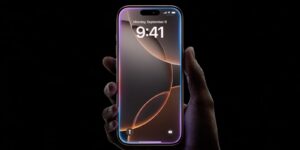Apple granted four new patents for ‘Apple Glasses’ — Apple World Today

[ad_1]

Here’s how it would work: Control circuitry in the device can gather information on a user’s point of gaze using a gaze tracking system and other sensors, can gather information on the real-world image such as information on content, motion, and other image attributes by analyzing the real-world image, can gather user vision information such as user acuity, contrast sensitivity, field of view, and geometrical distortions, can gather user input such as user preferences and user mode selection commands, and can gather other input.
Based on the point-of-gaze information and/or other gathered information, the control circuitry can display the real-world image and supplemental information on the display. The supplemental information can include augmentations such as icons, text labels, and other computer-generated text and graphics overlaid on the real world image and can include enhanced image content such as magnified portions of the real-world image.”
Patent number 10,748,969 is for a “display with holographic angle-of-view adjustment structures.” Its purpose is to adjust the viewing angle of a user wearing a HMD.
Here’s how it would work: the display would have an array of pixels. Each pixel may have a light-emitting diode such as an organic light-emitting diode or may be formed from other pixel structures such as liquid crystal display pixel structures. The pixels would emit light such as red, green, and blue light.
An angle-of-view adjustment layer may overlap the array of pixels. During operation, light from the pixels passes through the angle-of-view adjustment layer to a user. The viewing angle for the user is enhanced as the angular spread of the emitted light from the pixels is enhanced by the angle-of-view adjustment layer.
Patent number 10,748,340 is for an “electronic device with coordinated camera and display operation” that could be configured to display virtual reality (VR) content for a user in which no real-world content from the camera is displayed or mixed reality content in which a combination of real-world content from the camera and overlaid virtual reality content is displayed. The goal is to have seamless video with no distracting visual artifacts.
Control circuitry in the device would adjust the display and camera while transitioning between VR and MR modes. The control circuitry may reconfigure the camera to exhibit a desired frame rate immediately upon transitioning from VR mode to MR mode. Transitions between modes may be accompanied by smooth transitions between frame rates to avoid visible artifacts on the display.
[ad_2]
Source link



